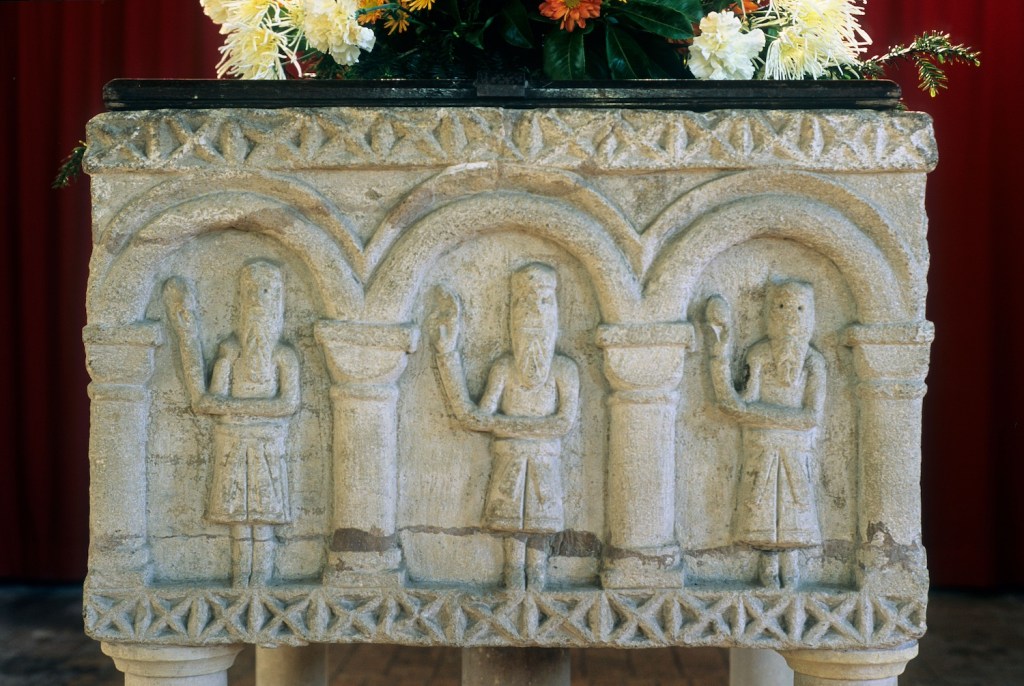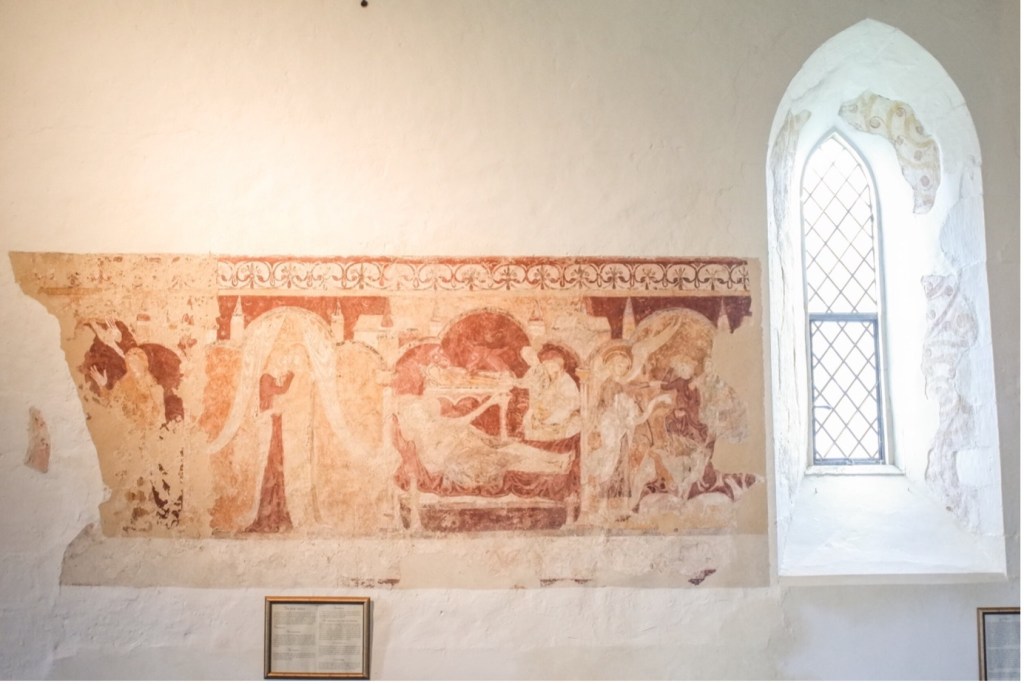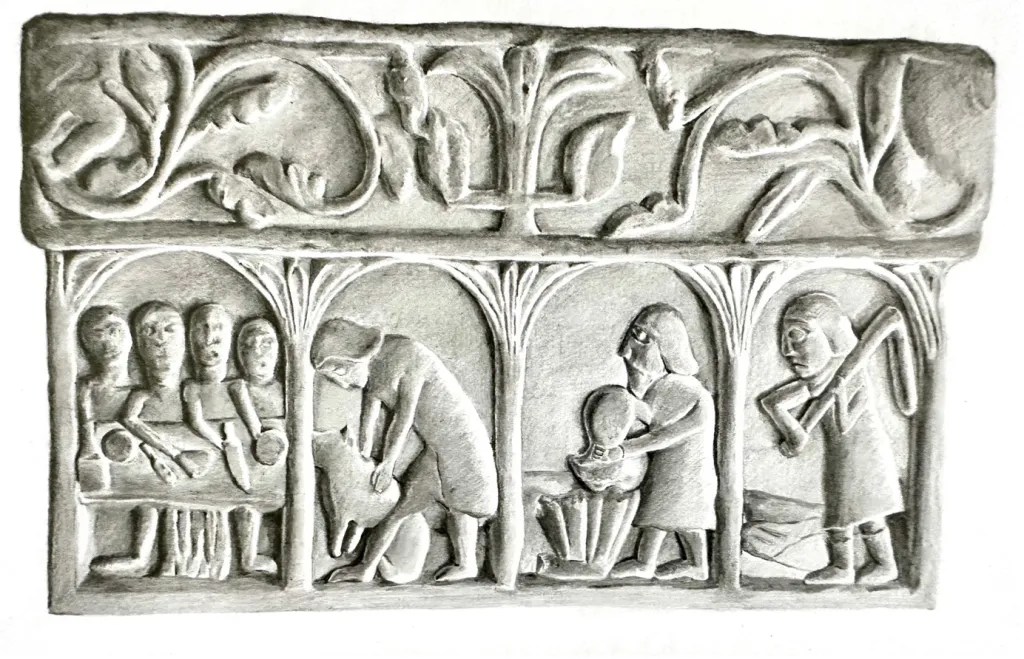For hundreds of years, the 12 days of Christmas have been a significant highlight of the English religious year. In the medieval period, churches in Britain and Ireland were vividly adorned with paintings, stained glass, and sculptures that depicted the Christmas story. Many of these images were destroyed in the Taliban-like wave of destruction that accompanied the English Reformation. But ancient depictions of the Nativity still exist in our churches – as long as you know where to look.
Nativity scenes were uncommon during the early medieval period but they began to be carved into our baptismal fonts from around the 12th century. One of the earliest surviving examples in the UK is the font at Fincham in Norfolk, made up of four panels beneath an arcade of rounded arches. One panel illustrates the three Magi giving their gifts to Mary and Joseph, who face outward from the font. The last panel shows Christ in the manger under a daisy-like star, watched over by an ox and a donkey. The carving may be crude but it is incredibly endearing.

At St Mary’s, Burnham Deepdale in Norfolk another square 12-century font, pictured above, captures something of the Christmas celebrations of ordinary country people. Autumn and winter start with a man threshing in September, followed by wine being barrelled in October and pigsticking (or boar hunting) in November. Finally, four people, are depicted waiting for a Christmas feast to begin at a table filled with plates, bowls and cutlery.
From the 13th century onward, Christmas imagery began to appear in stained glass. One of the earliest surviving examples is found in three panels at Lanchester, County Durham. These windows vividly depict the Annunciation to the Shepherds, the Adoration of the Magi, and the Flight into Egypt.
By the mid-fourteenth century, it is likely that most churches had an interpretation of the Christmas story somewhere. A striking example can be seen in the east window of the Lady Chapel at All Saints, York. This window features six panels from the life of the Virgin Mary, including a wonderfully made Nativity scene that is framed within a cusped Gothic arch. An elderly Joseph leans on his staff and looks down upon his much younger wife, who gazes lovingly at the Christ child perched on her knee. The holy family are overlooked by the beasts in the stable. The scene is still incredibly vivid – with the figures and forms painted onto a glorious glass mix of reds, blues, greens, and gold.

Church walls were often decorated with stories from the life of Christ or, more commonly, the Virgin Mary, as she was the focus of the most popular of English medieval cults.
The north nave wall of St Clement’s at Ashampstead, Berkshire, contains one of the best-preserved and finely painted scenes of the Holy Infancy from the mid-thirteenth century. These include representations of the Annunciation, the Visitation, the Nativity, and the announcement of Christ’s birth by the Archangel Gabriel to the Shepherds, one of whom is playing the bagpipes, accompanied by barking dogs. The Nativity scene follows a familiar formula: Mary lies horizontally on a couch, reaching out toward Joseph, while the infant Jesus sleeps in a manger which appears to hover over her, and all is watched over by the oxen, munching on his fodder, and a donkey.

The Nativity depicted on the stone altar screen, a reredos, at Christchurch Priory, Dorset, is one of the most remarkable survivors of English church art. Its lower section, carved in the mid-fourteenth century, illustrates a ‘Jesse tree’ that depicts the ancestry and family tree of Jesus, beginning with Jesse, the father of King David. Above Jesse’s recumbent likeness is a Nativity panel crammed with activity. This includes another smaller panel that shows the three shepherds and their encounter with Gabriel, as their dogs and sheep roam around. The rest is a representation of the ‘Adoration of the Magi’. Accompanied by angels, the three wise men are about half life-size and are touchingly depicted in conversation, discussing perhaps the miracle and revelation of the circumstances of Christ’s birth as they stand over the Holy Family. They carry their gifts of gold, frankincense, and myrrh.

For centuries, these carvings and stained glass windows – like many others around the country – have given comfort to Christians around Christmas time. If you attend one of our older churches today, look out for depictions of the Nativity. In doing so, you will be continuing a tradition that has lasted for hundreds of years.






Comments